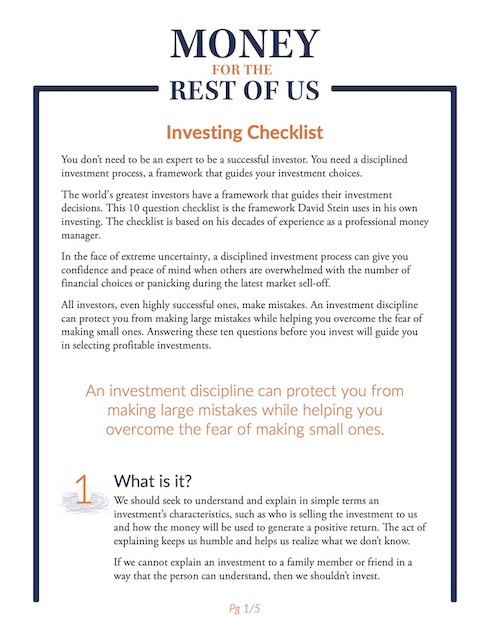What are the hidden risks of ETFs and passive investing.

In this episode, you’ll learn:
- What is the size of the ETF market relative to mutual funds.
- What percent of funds and ETFs are passively managed.
- What is market capitalization.
- How ETFs differ from mutual funds in how they trade.
- What is net asset value.
- What is the arbitrage mechanism that keeps ETFs market prices close to their net asset values.
- How new ETFs are created and redeemed.
- How ETFs are causing increased market volatility.
- How reduced liquidity for securities held by ETFs is increasing systemic risk.
- The systemic risks of leveraged ETFs.
- What are the risks of passive indexing.
Show Notes
It’s Easy To Beat The Market by Moshe Levy
The Social Science Research Network
Summary Article
ETFs are convenient but not without risk
Exchange-traded funds (“ETFs”) are marketable securities that seek to track a specific index or segment of the capital markets, such as large company stocks, bonds or commodities. Most ETFs track passive benchmarks, such as the S&P 500 Index for U.S. large company stocks or the Russell 2000 Index for U.S. small company stocks.
Prior to the introduction of the first ETF in 1993, investors that wanted to passively invest in specific segments of the market were limited to index mutual funds.
According to the Investment Company Institute (“ICI”), as of December 2014 there were 1,411 ETFs domiciled in the U.S.
Total net assets of these ETFs as of March 31, 2015 were $2.0 trillion compared to $16.0 trillion in the U.S. mutual fund industry. The ICI estimates there was $1.7 trillion in assets invested in index mutual funds at year-end 2013.
This means approximately 20% of all ETF and mutual funds assets are passively managed in that they are seeking to replicate the performance of segments of the market rather than try to outperform the market through security selection.
Difference Between ETFs and Mutual Funds
The primary difference between an ETF and an index mutual fund is ETFs trade throughout the day on an exchange in the same manner as stocks while mutual funds only trade after the market close.
Because an ETF trades throughout the day, its share price constantly fluctuates based on the actions of buyers and sellers in the open market. That means the market price of the ETF can deviate from its net asset value.
The net asset value (“NAV”) is the value of the ETF’s assets less any liabilities divided by the number of shares outstanding.
In order to limit the extent to which an ETF’s market price differs from its net asset value, the ETF sponsor publishes the net asset value every 15 to 60 seconds throughout the trading day.
If there is a discrepancy between the ETF’s NAV and its price, investors can buy or sell short the ETF while at the same time buying or selling short the underlying securities held by the ETF. Selling short means investors profit when the securities fall in price.
This opportunity to earn an essentially risk-free profit by taking advantage of price discrepancies ensures that any difference between an ETF’s price and its NAV remains tiny during normal market environments.
How New ETF Shares Are Created
ETFs also differ from index mutual funds in how new shares are created. An index mutual fund sponsor creates or redeems shares at the end of the trading day based on that day’s buy and sell orders.
ETF sponsors create and redeem shares throughout the trading day as well as at the end of the day as it works closely with institutional traders called authorized participants.
Each day the ETF publishes a list of securities and their weights called the creation basket that represents the securities held by the ETF.
New ETF shares are created when the ETF sponsor transfers shares to an authorized participant in exchange for a basket of securities that approximates the creation basket.
Similarly, ETF shares are redeemed when the ETF sponsor exchanges the securities that comprise the creation basket for shares of the ETF held by the authorized participant.
These newly issued and redeemed ETF shares are called creation units, and they typically consist of trading blocks ranging from 25,000 to 250,000 ETF shares.
ETF Risks
While the significant growth in ETFs has given investors access to many different asset types at a very low cost, that convenience has not come without risk.
Academic studies, such as a recently published paper by Liao Xu and Xiangkan Yin of La Trobe University in Melbourne, show that the growth in ETFs has increased the volatility of the underlying indices that ETFs track.
In addition, the underlying trading in securities that comprise an ETF by arbitrageurs and authorized participants contributes to volatility in the underlying securities that comprise an ETF.
Arbitrageurs and authorized participants need access to both ETFs and their underlying securities in order to facilitate a smoothly functioning ETF market. During periods of market turmoil and high volatility, however, liquidity (i.e the ability to buy and sell securities) can dry up.
This can lead to large price gyrations in ETFs and their underlying securities.
For example, during the May 2010 Flash Crash some 20% of ETFs lost more than 50% of their value in a matter of minutes before rebounding, according to Morningstar.
A number of ETFs employ leverage in order to give investors two to three times the market return of the target index. They do this by using futures and other derivative securities.
During a market sell-off, these levered ETFs need to reduce their exposure to markets as part of their rebalancing efforts, which means they could potentially exacerbate the sell-off as they liquidate future contracts.
If at the same time, authorized participants are trying to redeem shares in the levered ETF that would require the ETF sponsors to reduce their market exposure even more, potentially contributing further to the market decline.
The bottom line is while ETFs appear straightforward and easy to use, there is a great deal of complexity lurking beneath the surface.
Complex environments can be highly unpredictable during periods of turmoil as was evidenced during the May 2010 Flash Crash.
Prudent investors should be cognizant of the risks posed by ETFs and scale their exposure accordingly.
